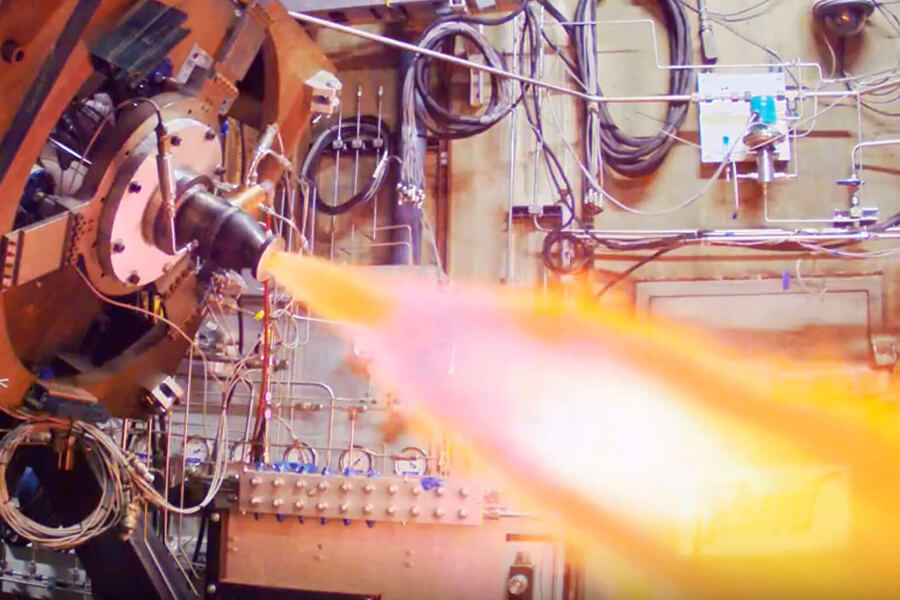Purdue Space Program perfecting its trailblazing rocket for competition
FAR-MARS, named after its two sponsors (Friends of Amateur Rocketry and the Mars Society), is a May competition that challenges students to launch a bi-propellant liquid fueled rocket as close to 45,000 feet (minimum of 30,000 feet) as possible. If those bi-propellants are liquid oxygen and liquid methane (lox/lch4), they can win an additional $50,000.
Currently, Purdue’s group is a serious — and perhaps the sole — contender.
“We are the only team with a rocket for the lox/lch4,” said Christopher Nilsen, president of Purdue SEDS and a multidisciplinary engineering major. “As long as we break the minimum threshold (30,000 feet), then we would automatically win. That goes for both halves of the prizes.”
Nilsen stressed that this is an extremely challenging project, explaining why Purdue is the only known university attempting this bi-propellant feat.

“Liquid rockets are magnitudes more complex than solid rockets,” he said. “There are hundreds of colleges that make solid rockets, but only three that have ever flown a liquid.”
Beginning in the fall 2017 semester, the team constructed its 12-foot engine and rocket, which members named Boomie Zoomie. “Most people hated it at first. Now everyone adores it,” Nilsen said.
Liquid methane isn’t commercially available anywhere, so the team makes its own. The students built a condenser system to convert gaseous methane into liquid methane. They fuel it into the rocket directly on the pad, which the team also built from the ground up using Purdue’s state-of-the-art facilities.
“Things like valves and other plumbing is purchased,” Nilsen explained, “but everything else is student-made and designed. We spent over 700 hours in the BIDC (Bechtel Innovation Design Center) machine shop last semester.”

During the 2018 FAR-MARS competition, the team learned late in the game that the rocket had limited thrust. “In order to fly, we had to submit a hot fire (test of the engine) 30 days before launch. We missed it by hours in dead week. So we didn’t fly,” Nilsen said, adding that the only other team to compete in the contest — UCLA — used ethanol as its fuel. Its rocket blew up once it left the pad.
The Purdue club, which boasts more than 50 students, is not discouraged, and they are full speed ahead in preparing for the May 2019 contest. Much of the preparation centers around a test that lasts a mere few seconds.
Zucrow Labs on campus commonly completes hot fires for .5 to 2-second intervals to gather data for one specific area. “We test for 8 seconds because we are looking at how the whole rocket performs while it is on,” Nilsen said. “Tests at Zucrow are normally launched from a test stand in a test cell. We have literally bolted the entire rocket to a concrete wall.”
Boomie Zoomie has had three hot fires and will likely have two more before May. The team is hoping to conduct a public demonstration flight of 8,000 feet in the fall that also will provide valuable data on how to perfect the rocket for competition.
“The actual flight is a massive accomplishment,” Nilsen said. “It’s much more than a demo. It really is a first. I believe we will be the second or third group in the world to fly a lox/lch4 rocket and the first purely student group to do it. We will see what happens.”
Source: Purdue Space Program to compete with groundbreaking liquid-fueled rocket
